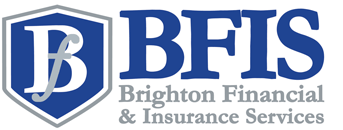Error & Omissions (E&O) Insurance in California

9:00am - 6:00pm Mon-Fri
Will Reply in 15min*
Index
Types of E&O Insurance Coverage
Key Exclusions to Look Out For
Other Considerations When Purchasing E&O Insurance in California
How much coverage you should buy?
E&O Insurance vs. Professional Liability Insurance
E&O Insurance vs. General Liability Insurance
What To Do if You Have a Claim
E&O insurance, also known as errors and omissions insurance, is an important type of liability policy for businesses in California. It provides crucial protection against claims of negligence or failure to perform up to a professional standard.
This blog post will provide an overview of what E&O insurance is and why it can be a smart investment for businesses in California. We’ll also discuss the different types of coverage available, key exclusions to look out for, and other considerations when purchasing this type of liability policy.
Types of E&O Insurance Coverage
E&O insurance provides coverage for financial losses that may occur due to a professional error or omission. It can help protect against claims of negligence, incorrect advice, failure to meet contractual obligations, and other issues related to professional services provided by the business.
The most common types of E&O insurance coverage are:
- Professional Liability: This covers claims of negligence or incorrect advice that results in financial harm for the client.
- Contractual Liability: This covers breaching of contract terms and conditions, as well as failure to perform duties specified by a contract.
- Third-Party Liability: This coverage provides protection against third-party claims that may arise due to the actions of the insured.

Key Exclusions to Look Out For
It’s important to understand the key exclusions of your policy so that you know what is not covered by E&O insurance. Generally, this type of policy will exclude coverage for:
- Intentional acts or omissions
- Criminal activities
- Property damage or bodily injury
- Patent infringement
- Libel, slander or defamation of character
- Misrepresentation.
Other Considerations When Purchasing E&O Insurance in California
When purchasing E&O insurance for a business in California, there are several other important points to consider. This includes the following:
- The size and scope of the business – It’s important to consider the scale of operations when purchasing E&O insurance. If a business is particularly large or has more complex professional services, higher limits of coverage may be required.
- Claims history – Businesses with a track record of claims could face higher premiums or difficulty obtaining coverage.
- The frequency of professional services – If a business is providing professional services on an ongoing basis, it’s important to ensure that the coverage includes protection for all areas where the business may be exposed to liability.
- The type of professional services – Different types of professional services may require specific types of E&O insurance coverage. For example, businesses providing financial advice or medical advice may need unique forms of coverage to protect against potential liability.
- The requirements of clients – Businesses should check with their clients to ensure that the E&O coverage meets any criteria specified in a contract.
How much coverage you should buy?
The amount of E&O insurance coverage required will vary depending on the type and scope of business being insured. Generally, businesses should purchase enough coverage to protect them against any potential financial losses or damages that may occur due to a professional error or omission. It’s also important to consider the value of assets and investments when determining how much coverage is necessary.
E&O Insurance vs. Professional Liability Insurance
Although E&O insurance and professional liability insurance are closely related, they do differ in some important ways. Most notably, E&O insurance typically provides broader coverage than professional liability insurance. This is because it covers not only errors or omissions but also any contractual obligations that may be breached or failed to perform. Professional liability insurance, on the other hand, usually only covers claims of negligence or incorrect advice.
Another key difference between E&O insurance and professional liability insurance is the types of businesses that the policies are designed for. While professional liability is typically only available to professionals such as doctors, lawyers or accountants, E&O insurance can be purchased by any business that provides a service.
E&O Insurance vs. General Liability Insurance
General liability insurance provides protection against third-party claims of property damage and bodily injury. Whereas E&O insurance provides coverage for financial losses or damages that may arise due to professional errors or omissions, general liability coverage typically excludes these types of claims. It’s important to note that these two forms of insurance can work together to provide comprehensive protection for a business.
What To Do if You Have a Claim
If you have a claim under your E&O insurance policy, the first step is to contact your insurer and provide all relevant information. This includes details of the incident, any documents or proof of liability, and any communication between yourself and any third parties involved. Your insurer will then review the claim and determine whether it is covered under the policy. If so, they will work with you to resolve the claim and provide compensation as necessary.
Common Pitfalls of E&O Insurance
- Failure to review coverage limits – It’s important to periodically review your E&O insurance coverage limits to ensure they are adequate for the type of business you operate.
- Underestimating potential risks – Businesses should take into account all potential sources of liability when determining how much coverage is necessary.
- Not reading the fine print – It’s also important to read the policy carefully and understand what is and isn’t covered.
- Not keeping up with industry changes – The insurance landscape can change quickly, so businesses should stay informed about any new regulations or best practices that could affect their E&O insurance coverage.
- Not securing additional coverage
- If a business requires more protection than what’s provided by their E&O insurance policy, they should consider purchasing an additional policy or supplementing their existing coverage.

Have Questions? Compare California E&O Insurance Quotes
There are many factors to consider when selecting an E&O insurance policy, and it’s important to find the right coverage for your business. To compare California E&O Insurance quotes from top-rated carriers in your area, contact us today for a free quote. Our experienced agents can help you make informed decisions about the right type of coverage for your business. Get started now by requesting a free quote.



